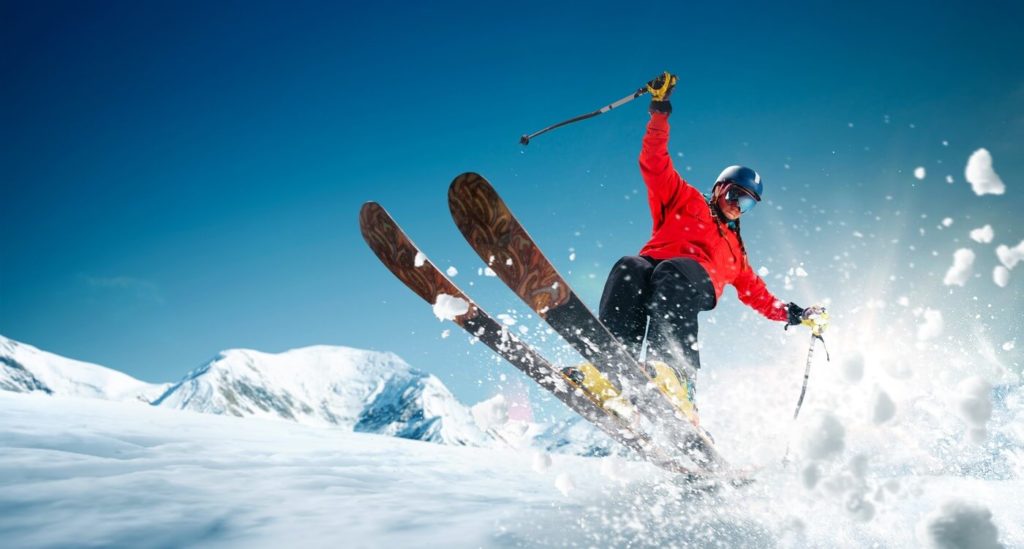Freezing and stress when skiing: how to ski without panicking?
Written by: Loris Vitry (holistic coach)
Validated by: Cathy Maillot (Osteopath)
Caution: If you have any medical questions or concerns, please speak to your doctor. Even if the articles on this site are based on scientific studies, they do not replace professional medical advice, diagnosis or treatment.

Beginner or pro, first race or new trick, winter sports offer a lot of fun on the snow, but they also bring nerve-racking challenges.
Overcoming your fears and doing more makes skiing so much more rewarding.
So, when dealing with stress on the snow, having the knowledge to calm the mind and body can help you accomplish more and panic less.
Whether it’s your first run, learning to ski, taking a jump or making your first slide, here are some tips to help you keep your hands firm and your mind at ease.
Knowledge of skiing, a stressor?
Stressed skiers are very often confronted with a lack of knowledge about the “how” of what they are trying to achieve.
The nerves are then provoked by doubt; lack of confidence in themselves and in their ability to tackle the slope, turn, jump or ramp in front.
If you’re not sure how to deal with bumps, whether to stop at the bottom of the hill, or how you’ll land after the jump is done, feelings of stress are all natural.
Getting your questions answered and gaining the knowledge to tackle your next challenge is likely to overcome some of these blockages.
This is why ski lessons are a great way to gain knowledge and build self-confidence to avoid blockages.
The weather on the snow
In snow sports, the idea that “time plus knowledge equals confidence” is not new.
But the use of time refers to “training time”.
If you’re struggling to find the courage to go down the piste you skied perfectly last winter, ask yourself what you’re afraid of.
If you’re worried about controlling your speed, falling, or something else, use your knowledge to identify skiing techniques that can help you overcome those fears.
Then take the time to practice the proper technique and gain confidence on a slope below your level.
Control breathing
If you are trying something new on the snow, or have not skied for a while, a few feelings of panic are inevitable.
If you have the knowledge and take the time to practice, but still feel a little nervous, accept stress as part of the thrill.
Move away from the idea that fear is bad, accept your nerves, and instead focus on controlling your breathing.
A calm inhale and exhale will provide your mind and body with the oxygen they need to function.
Concentrating on your breathing has a calming effect and will help relax your (possibly tight) muscles.
Relax the body
Calm, steady breathing can help the body relax before embarking on a snow sports challenge, but warming up your muscles is a must first.
In a cold mountain environment, it can be easy to strain and give in to the blockage.
While movement and layers are actually the key to staying warm.
If you haven’t already been pumped on previous laps, it’s good to take off your skis or snowboard and run in place, or jump.
Once you are warm, you should feel a bit more relaxed.
Actively releasing tension in your body as you exhale is a great way to calm resisting nerves.
Visualize things to do
Once you’ve made all the effort to prepare for anything that is making you nervous, fill your mind with positive thoughts.
Ignore all of the things that make you fear the challenge, because you have the knowledge and “know-how” to overcome them.
Focusing on the snow sports techniques you are going to use, visualize yourself, step by step, going down the ski slope or performing the snowboard trick.
Concentrate only on the dos and don’ts and neglect the thoughts of what not to do.
If you have negative thoughts, don’t keep them in mind, distract yourself by singing or listening to music.
Avoid crowds
Sometimes, the gaze of others coupled with lack of confidence is a source of blocking.
Getting up early is a sure way to beat stress in this case.
This allows you to ski the most popular and visible slopes while everyone is having breakfast.
You can go to the quietest and least visible slopes of the resort.
Many nervous skiers also find a resort’s home runs traumatic at the end of the day.
This is when everyone comes back to town, and the trails are often both bumpy and icy.
The best alternative is to go down the mountain early or better yet take one of the ski lifts to go down.
Erase memories of past falls
The first time you get back on the slopes after an injury is difficult.
But research suggests that you can have a fear memory rendered harmless.
By remembering the bad memory and then pushing it back, you can change your reaction to it.
The best way to do this is to use what is called “exposure therapy” with a trained psychologist.
If you only have a mild mental block, try to reframe the accident and your feelings about it yourself.
Take a dissociated look at the fall or crash and see how you could prevent the same from happening.
“What needs to be changed to prevent the same thing from happening again?”
Answering this question will allow you to unblock any feeling of panic.
Nothing beats the joy of sliding down a ski slope.
But when stress does arise, it becomes impossible to take the sticks.
So, adopt these tips to take on the track as the king of sliding.
Continue reading:
Tibetan sound bowl: benefits of sound meditation?

